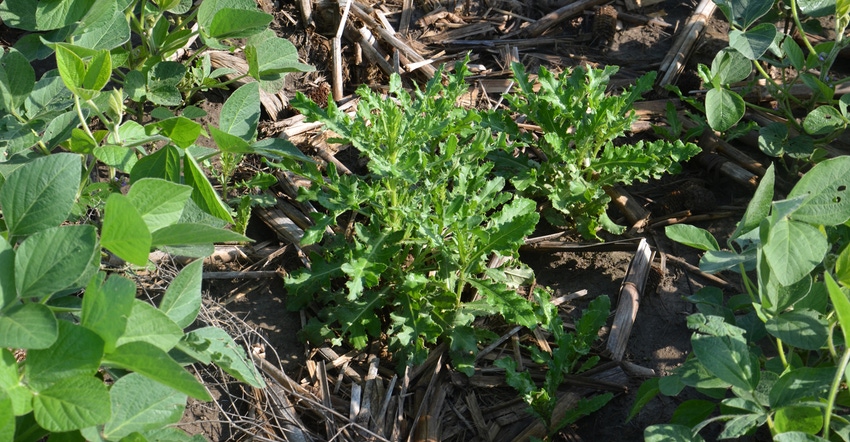
This isn’t a trick question. Is there a difference between a liquid ounce and dry ounce? Fred Whitford has asked several audiences that question.
“Many people know, but some don’t,” says Whitford, Purdue University Pesticide Programs director. “There is a difference — they’re different units of measurement.
“One measures liquid ounces; there are 128 ounces in a gallon. The other measures dry materials; there are 16 ounces in a pound.”
Why does it matter? “Because if you use a measuring cup designed for liquids on a dry product, or vice versa, you may not add the right amount of one or more herbicides to your spray mix,” Whitford says.
He notes that he visited a farm where the grower complained about poor weed control. When Whitford asked him how much product he applied and how he mixed it, the grower insisted he had done everything correctly. However, when he finally showed Whitford the measuring cup, it was for the wrong consistency of product. “As a result, he wasn’t applying as much of the product as the label recommended,” Whitford says. “That’s why he wasn’t getting good weed control.”
Good advice
“Don’t measure dry chemical materials in liquid measuring cups,” Whitford says. “It’s that simple. Likewise, don’t measure liquid materials in a measuring cup designed for a dry material.”
The fundamental difference, which leads to error, is that liquid measuring systems rely on volume, and dry measurement systems refer to weights, Whitford says. Plus, various dry materials have different densities.
Think of feathers vs. lead, he suggests. Obviously, it would take a huge amount of feathers to weigh as much as a very tiny piece of lead. The difference in density in dry herbicide materials isn’t that extreme, but there are differences, he says.
If you rely on volume to measure dry materials with different densities, you’re going to be off every time, Whitford insists. That’s why it’s important to follow label directions and make sure you’re measuring out the correct amount of material.
Scales vs. tubes
Some companies supply volumetric tubes to measure out chemicals. This can introduce two sources of error, Whitford explains.
First, the tube is calibrated specifically for that product. You don’t want to measure product X with a tube designed to measure product Y, he notes.
Second, volumetric tubes aren’t 100% accurate. “It’s common to see this on a tube: “Weighing required for accurate measurement — volumetric measurement may vary by plus or minus 7%,’” Whitford says. He notes he’s even seen a tube where it noted the difference could be plus or minus 20%.
“The message is simple: Get scales and weigh products instead of relying on tubes,” he says. “That’s a lot of error — either you will be missing weeds or spending more money on herbicide than you need to. It comes down to convenience or accuracy.
“You want accuracy. Spend $50 on scales, zero out the container, and weigh it every time.”
About the Author(s)
You May Also Like




